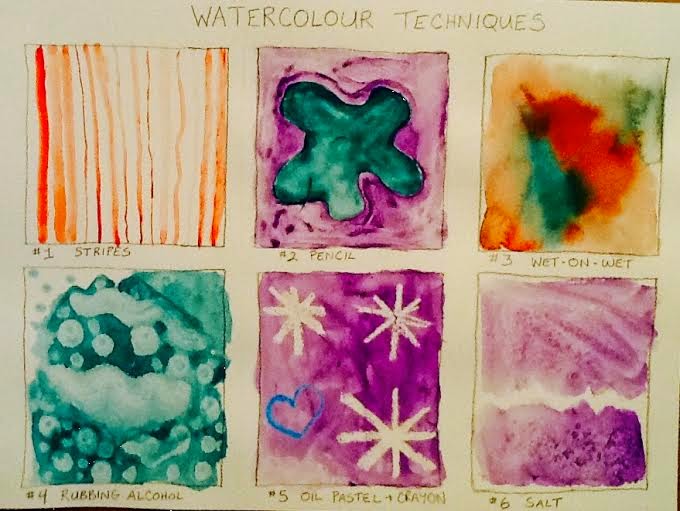 Last week my drawing and watercolour group took a break from their giraffes to learn about watercolour techniques. I found a great grade 6 example from deepspacesparkle with detailed explanations on how to introduce or review using watercolours. I decided to adapt this for our giraffe drawings.
Last week my drawing and watercolour group took a break from their giraffes to learn about watercolour techniques. I found a great grade 6 example from deepspacesparkle with detailed explanations on how to introduce or review using watercolours. I decided to adapt this for our giraffe drawings.Since I had watercolours in tubes rather than pans, each experiment was also an opportunity for the students to realize the importance of adding enough water to the paint. Some of the younger students still struggled with this concept, so for younger groups I would use pans in the future.
The first three techniques: thick and thin stripes, pencil contour, and wet-on-wet, all deal with learning how to control the medium. The next three: rubbing alcohol, oil pastel and crayon resist, and salt provided introductions to the possible effects for the backgrounds of the giraffe drawings. I had not used rubbing alcohol before, but I found that it just gave the kids okay results. In the future I will likely replace this technique with using cling-wrap instead. On the flip side, the kids were intrigued by using salt, with many of them adding it to their other techniques. Even though the class is a short one, the students were able to successfully explore each technique and really enjoyed tackling something new.
Have a watercolour tip or technique that you think is AMAZING!? Be sure to share it in the comments.











No comments:
Post a Comment